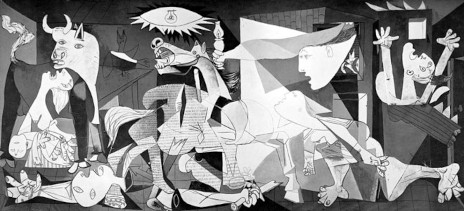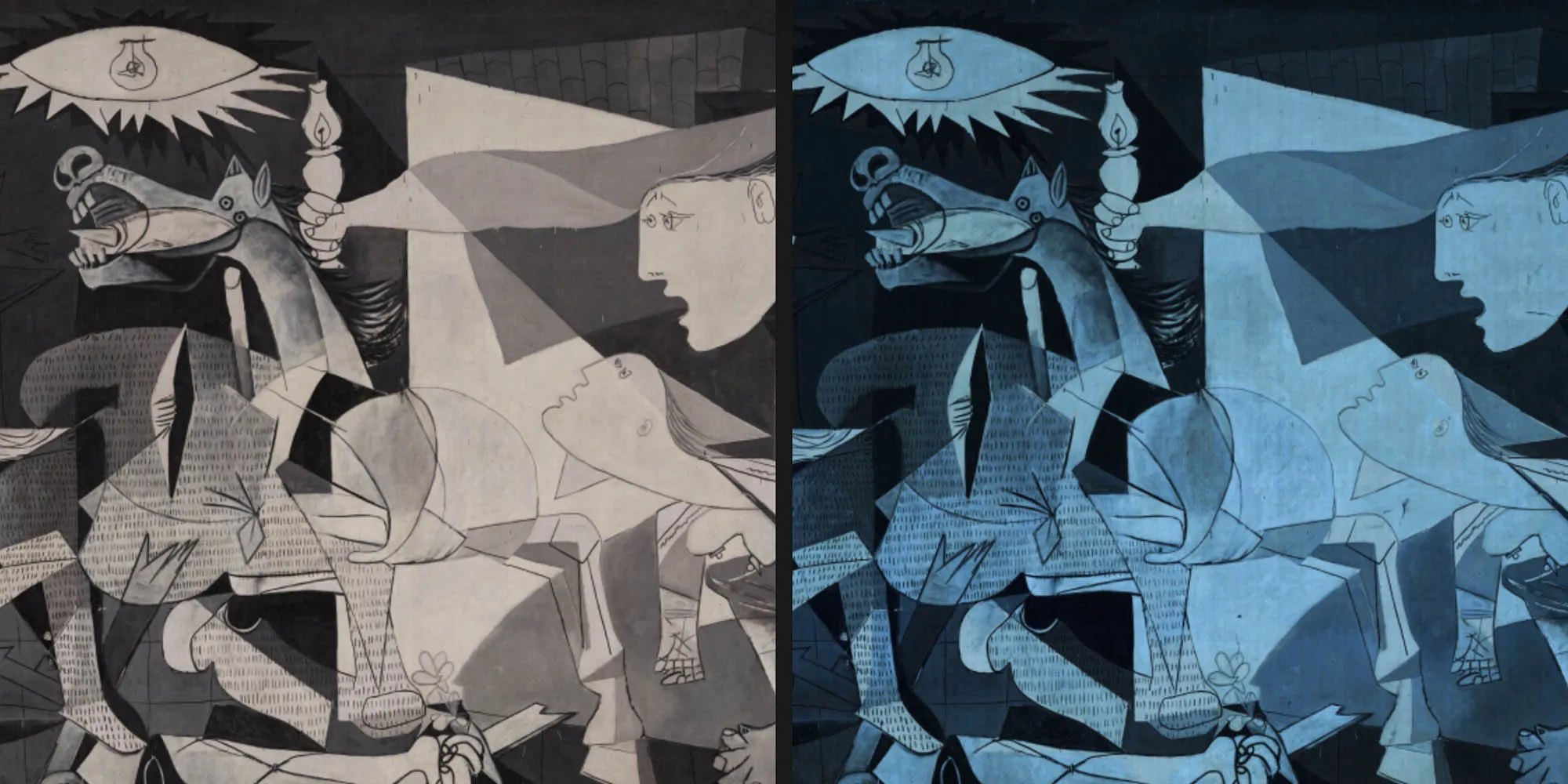Hanging in Madrid, huge and expansive, is one of the most important pieces of work ever painted by Cubist master Pablo Picasso.
Known for his geometric, colorful paintings, this masterpiece differs from the others. It is composed in black, white, and gray, but is no less haunting and impactful for the monotone palette.
This painting is Guernica, Picasso’s answer to the bombing of the Basque town of Guernica during the Spanish Civil War by Nationalist Spain and its Nazi allies. The town of Guernica was full of women and children, and the massacre shook many, including Picasso, to his core.
This article will explore the powerful, enduring impact of Picasso’s Guernica and the legacy the anti-war painting leaves behind.

Pablo Picasso’s Guernica
The Inspiration Behind Guernica
What would become Pablo Picasso’s most influential painting would start with a commission.
Picasso, a Spanish painter by birth, was living in Paris, France when he received the job. The Spanish Republic commissioned Picasso and other important Spanish artists to create pieces for the Paris International Expo of 1937 to help raise awareness of the war.
At the time, Spain was embroiled in the Spanish Civil War. The Spanish Republic was desperate to raise funds for their war against the Spanish Nationalists led by Francisco Franco.
Picasso took the commission but was uninspired at first, not knowing what exactly to create for such an important cause. Soon enough, though, he would read George Steer’s firsthand account of the bombing of the small town of Guernica.
It awoke something in the painter. He would abandon all of his other ideas for the Spanish Republic’s commission, and the focus of his piece shifted entirely to the bombing of Guernica.
What Does Picasso’s Guernica Look Like?
Before you can take in anything about Guernica, there is one feature that dominates everything–its sheer size. Guernica measures over 25 feet wide and is nearly 12 feet tall.
The painting has a monochromatic palette of black, white, and gray. The calmness of the colors does little to distract from the horror that the piece depicts.
The images within are distorted and fragmented, including a wounded horse and a grieving mother cradling a dead child. This is a direct reference to the women and children who perished during the bombing of Guernica.
The scene is engulfed in flames, and dead, dismembered soldiers litter the ground. Amidst it all is a bull that looms over the injured and deceased, representing the brutality of war.
There are several hidden images in Guernica as well, including a human skull and a second bull.

The Impact of Picasso’s Guernica
When Guernica was first unveiled at the Paris International Exposition, it didn’t garner the attention one might expect from a painting so powerful. The Spanish Pavilion was joined at the exposition by pavilions run by their enemies, including Nazi Germany and the Soviet Union.
There was some discontent with how little of a splash that Guernica made. Little did they know it would go down in history as one of the most important pieces ever created.
Guernica wasn’t without its fans, though. Some admirers saw the message of the piece for what it really was–a timeless portrayal of war, tragedy, and grief.
Cubism isn’t usually the painting style chosen to depict such serious subjects, but Cubism was Picasso’s signature style. The jagged, broken figures in Guernica gain even more gravity by being depicted in Cubism.
Keeping the Painting Safe
From the Paris exposition, Guernica was taken on tour throughout Europe. Once Spanish dictator Francisco Franco was victorious in taking over the country, the painting was taken to America as a way to once again raise awareness and funds.
Many pieces of art were being destroyed during WWII. To keep Guernica safe, Picasso declared that it would be kept in America until liberty and democracy had been achieved in Spain once more.
Guernica was returned to Spain in 1981, where its impact was much more powerful than it was when the painting was first unveiled. Guernica had become a cultural icon.
With the death of Franco, the Spanish people viewed Picasso’s painting as a symbol of triumph and hope, despite what the piece itself depicted. Despite the respect the piece garnered, it was still polarizing to some parts of the Spanish population.
To keep Guernica from harm, the enormous painting was displayed behind bulletproof glass until 1995, when the barrier was finally removed.
Guernica‘s Anti-War Message
Picasso died eight years before Guernica returned to Spain. However, just like he instructed, it didn’t return to his home country until the dictatorship of Franco was finally over and democracy was reestablished.
But it wasn’t just Spain that was impacted by Guernica. During its stint in America, Guernica was displayed at the Museum of Modern Art, where thousands were exposed to its message against the brutality of war and all the horrors to be found therewithin.
Since Guernica didn’t feature any specific battle, it was considered timeless. The suffering that Picasso painted could have occurred during any battle, in any war. Art historian W.J.H.B Sandberg described Guernica as “ambiguous, unreal, inside and outside at the same time.”
Today, Guernica is still used to convey anti-war sentiments and to help people see, through art, the true heartbreak that wars can bring. Copies of Guernica are carried during protests, displaying without words the need for peace that Picasso painted so long ago.
A tapestry reproduction of the painting hangs at the United Nations headquarters in New York. There, it has witnessed the beginning and end of numerous conflicts through the years.
Now, Guernica hangs in the Museo Reina Sofia in Madrid, just as massive and awe-inspiring as ever. When virtual tours of Museo Reina Sofia were created during the COVID-19 lockdowns, Guernica in all its glory became more accessible than ever.
Undoubtedly, it has driven home the harsh truth of war to people who would never get a chance to view the painting otherwise.
References
“Guernica, work by Pablo Picasso”-Alicia Zelazko
https://www.britannica.com/topic/Guernica-by-Picasso
“Picasso’s “Guernica”-W. J. H. B. Sandberg